Your sales funnel is your opportunity pipeline, and a fundamental area where so many companies fail.
Your B2B SaaS funnel is the visualization of your sales process.
So if you really want to optimize your sales efforts and win more customers, mapping out your entire sales funnel is a MUST!
The sales funnel for SaaS is a multi-staged selling process that tracks the customer journey all the way from the very first interaction, all the way through to converting them and then retaining their loyalty for the duration.
Unlike businesses that focus on getting new customers through short marketing promotions, the SaaS customer acquisition process requires a more thoughtful and delicate approach.
On the way to purchase, users hit various touch points and they must be handled with care!
Your ultimate goal is to gain their trust through engagement, expertise demonstration, and value communication.
A sales funnel is a valuable tool to help you understand what’s working and what’s not.
The most important thing to remember is that the customers’ journey through the funnel is absolutely under your control.
You can see where leads drop out of the funnel, when they engage, pinpoint the best time to follow up and, eventually, convert your leads to customers.
By understanding your sales funnel, you learn to address your customers’ needs and to send the perfect message at the perfect time.
And ultimately, getting clear on your funnel will increase your sales velocity so you can grow your business.
We set out the SaaS funnel stages so you can build a well-oiled sales machine to win!
The 6 SaaS Sales Funnel Stages
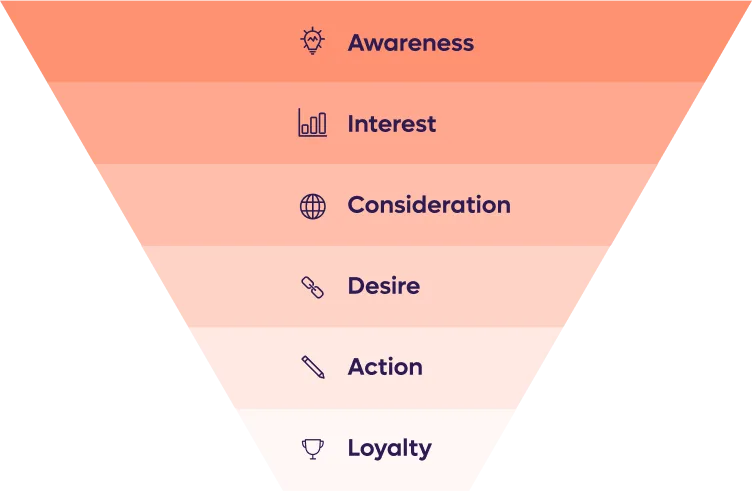
1. Awareness
The first stage of the SaaS sales funnel is awareness. It’s all about raising interest, building trust with and educating your Ideal Customer Profile (ICP).
In the awareness stage, your potential customers have burning questions about a certain area of their businesses.
They are hunting for information and it’s up to you to step in and provide them with the answers they didn’t even know they were looking for!
The reader may not have fully realized the problem yet, so are not necessarily searching for a specific solution, let alone specifically looking for information about your product. They may not even be aware that there are actual SaaS solutions that could solve their pain points.
So your main goal at this stage is to provide that information, build trust with your potential buyers and make your brand known loud and clear!
Step 1: Define the problem you want to solve for your audience
Step 2: Identify your ICP
Step 3: Determine what information would be helpful to them.
Step 4: Create content that directly solves their pain points
Step 5: Publish and promote that content on your website, social media platforms, and anywhere your ideal customers are.
When it comes to content it’s all about educating your ICP and showing some real solid authority in establishing their pain points and demonstrating that you have the solution they need now!
You need to deliver on value and show that no matter how much advertising your competitors do: you are the no brainer choice.
Highlight all the different ways your ICP can improve, advance and level up when it comes to overcoming their specific pain. Then move onto content like case studies that demonstrate step-by-step how you achieved epic results for customers who suffered from exactly the same pain points as the reader.
Getting your customer to understand your solution is all about creating the right state of awareness.
Create useful and engaging content, make it SEO-friendly and just keep posting! Building brand awareness is not an easy job, but it’s simply indispensable.
Whether you put efforts into organic growth or go with paid ads – your ultimate goal is to achieve one thing: get more exposure.
Remember, the more educated the reader is on what their pain is, what the solution is and how your SaaS product can provide that solution better than any competitor out there – the more likely they are to convert and actually stick with you.
Make an impression, spark their interest and keep delivering top quality content.
2. Interest
So, your prospect has visited your site, consumed your content, clicked around and filled out a form with their contact info. Result!
It’s time to kick it into gear because the hard work starts now.
Now that your potential customer is engaged, it’s time to build some serious trust.
This is arguably one of the most important steps in your sales funnel for a reason: how you respond to a potential customer will set the tone for your entire relationship going forward and make or break that elusive sale.
Studies show companies that nurture their leads generate 50% more sales at a 33% lower cost. So you’d better treat your leads with care!
While most lead nurturing involves a simple email drip campaign — you have a variety of other channels at your disposal.
Retargeting helps, email cadences help. But if you’ve got your lead’s phone number, nothing beats getting them on the phone to book that qualification call!
Your SDR must take a proactive role and be speaking to your potential buyers. The goal is to get them to book that call and don’t let them book more than 5-7 days after they fill out their details!
Otherwise they’ll forget who you are, forget what your service is all about and it’ll feel more like a cold call. Using a quality CRM tool here is key!
The goal here is to remove as much friction as possible and encourage your leads to keep making their way down the SaaS conversion funnel.
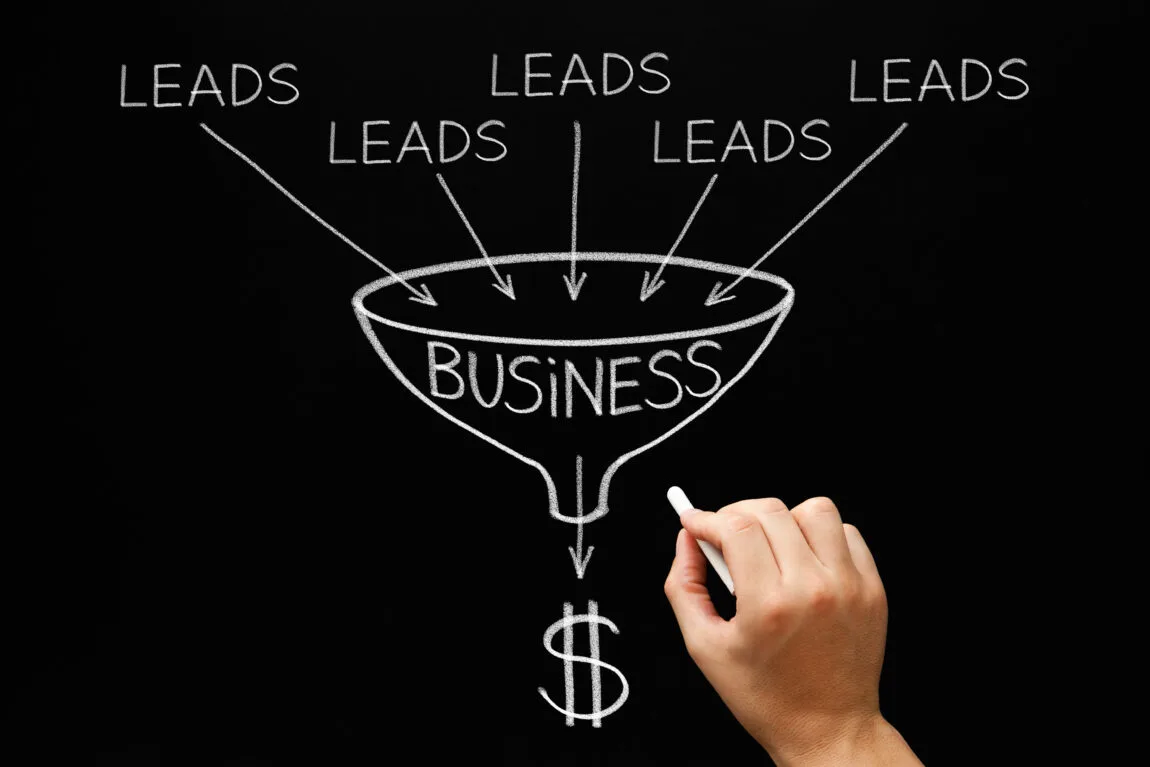
Remember, prospects who arrive at booking demo landing pages are aware that they have a problem, have evaluated their options, and are now poised to make the purchase decision!
The actions you take next to get them to the qualification call will determine the entire fate of your SaaS sales funnel.
Fun fact: The average SaaS landing page conversion rate is 4.6%.
So make sure your landing pages are optimized for the win!
3. Consideration
You’ve booked the qualification call – excellent result!
But it takes work to get them on the call, even once it’s in the calendar!
Pro tip: Make sure to do follow ups to let your lead know you’re excited to speak 24 hours in advance and 15 minutes in advance, providing a link where they can reschedule if necessary.
Now, this is not a sales call. I repeat, this is not a sales call.
The point of this call is to get your lead qualified.
The qualification part of your automated sales funnel is potentially the most important stage and what the majority of selling comes down to.
No lead should get past your qualification stage if they don’t meet the criteria of your next best client. If you’re speaking to people who aren’t even a fit to your solution – you’re wasting your time!
You may have a ton of prospects entering the pipeline — but the vast majority should drop off after the qualification stage. You might think you want a big wide funnel filled with lots of deals so you appear busy.
But don’t get lost in vanity metrics!
Remember: not all leads are created equal and you can’t help everyone.
Your SDR should let them know straight off the bat that you don’t accept that many calls and that you only want to speak to people you really believe you can help.
To get the best result from the qualification call you need to actively listen and get the information you need in order to make an effective sale and take your lead to the next stage of your B2B SaaS sales funnel.
Information you need to collect on this call:
- What are your lead’s pain points
- What is your lead’s business all about and what stage are they at
- What are your lead’s business goals and objectives
- How can your product solve your lead’s pain points
It’s all about helping your lead take the information they’ve consumed that led them to booking this call and creating a strategy for implementing it into their business.
4. Desire
So your lead has passed the qualification stage with flying colors.
It’s time to take this baby into overdrive because this stage of the automated sales funnel is where you really need to make the magic happen!
Whether it’s a traditional sales call or a product demo, your sales team needs a whole different set of skills to sell to today’s SaaS buyer.
Click here to learn how to turn your Reps into SaaS Sales Superstars in 10 Easy Steps!
First things first, people do not want to be sold to, they want to be informed.
So you want to name your Account Executive and demo process accordingly! Think something along the lines of ‘product specialist’ – because language really is everything.
Pro tip: Put your best foot forward by preparing an agenda in advance of the call or demo built around your lead’s pain points and business needs.
You want to let your qualified lead know that your job is to simply inform them. How to evaluate the opportunities in their business and how to evaluate the solutions to get their problem solved in a complete way.
A significant part of the sales call is a needs assessment activity. Assess their needs correctly and selling will be a breeze!
Tailor your demo or pitch specifically to their needs by asking the correct exploratory questions that will lead you to the close!
Hand over control of the conversation to your potential buyer to see where they take it, because this will give you all the information you need.
Your ability to sell comes down to one thing and one thing only: your ability to connect with the person you’re talking to.
It’s really not about selling at all. It’s simply about being excited and enthusiastic about your product and leading them to want to know more.
Show them how you can solve their problems one by one, step by step, better than anyone else on the market.
Do this with enthusiasm and you’re golden!

Now, during the process of presenting your software, your prospect may reveal concerns they have about product fit or pricing.
Make sure you’re engaging, listening and delivering value to explain how your product can be of service to their needs.
If the concern is about product fit, dig deeper to understand the issues. If the concern is about price, work together with your prospects to help them understand the value of your product and how it addresses their pain points.
So you’ve addressed their objections, you’ve dived deep into the product’s benefits and you’ve talked about price.
Now they’ve got to go away and think about the offer.
A key part of the sales process is to follow up. Always follow up!
Think BAMFAM – ‘book a meeting from a meeting.’ Your job is to follow up until you get a ‘no’ – but it’s not about harassing your lead, simply scheduling the next call.
5. Action
The bottom of the funnel is where the magic happens.
Once you’ve completed a successful demo, your prospect is ready to choose which solution they’ll implement.
Hopefully, your hard work paid off and the money’s in the bank!!

But the work isn’t over. Now, it’s over to Customer Success.
It’s the job of the customer success team to take the buyer and bring them into their world – the world of becoming an actual consumer of your product.
Customer success is a relatively new area for a lot of companies – but it’s catching on because it just makes sense.
Their skill set is not selling, but understanding how to connect your product to the buyer’s pain and activate them.
But just because customer success isn’t a sales function, doesn’t mean it’s not a revenue generating department. Customer Success should be monitored by churn rates and ability to activate and get customers retained.
Getting your brand new customer to become an active user of your product is all done via the onboarding process.
Your onboarding process needs to be as intuitive as possible and cover everything your new customer needs to know in order to get them up and running with your SaaS solution.
And it goes without saying – your Customer Success and Customer Support teams need to be on hand to assist your new user day and night!
You’ve gotta start as you mean to go on.
Getting your new customers integrated and fully activated with your SaaS product is a huge factor in whether or not they will stay for the long haul!
And of course, you’ve got to make the process for signing the contract as straightforward as possible with our top 5 SaaS contract best practices.
6. Loyalty
Now, to sell is important, but to retain is EVERYTHING.
As a subscription-based business, in a saturated, competitive SaaS environment – it’s vital to secure monthly recurring revenue.
So your job is to keep persuading your customers of your value each month. And you need to put in the work if you’re going to keep your customers for as long as possible.
This is achieved through building loyalty between your customers and your rockstar Customer Success team.
But it’s not just down to them.
All teams who influence revenue — marketing, sales, customer success and customer support — must be 100% aligned in order to see any kind of real and lasting success.
Metrics such as average subscription length and customer lifetime value are going to be the most helpful here. They’ll help you determine not only your revenue goals but also your pricing optimization.
So that’s all well and good – but how do you actually do it? How do you get your customers to stay loyal to you?
Have you ever seen a movie you loved so much that you just couldn’t stop telling all your friends about it?
That’s exactly what you need your customers to feel about your SaaS product.
You want them to be so happy with it that they can’t stop talking about it.
And the way to do that is by providing the highest-quality product you can.
One that’s so easy to use and meets your customers’ needs to such an extent that it becomes a part of the way they do their business on the daily.
To take it to the next level, you need to constantly ask for your customers’ feedback and incorporate it into your product roadmap. That way you can really show them you care.
Your product is your gateway to achieving customer loyalty. It’s as simple as that.
So make sure that your product team is putting in the effort to create a high-quality product that addresses your customer’s exact needs.
You should also consider providing regular product updates to your customers.
This will show them that you’re committed to making your SaaS solution the best it can be.
And what about those leads who didn’t convert? Don’t forget about them! Return to your nurturing strategy and reach out every few months.
While they may not convert now, this could change down the road.
Optimizing your SaaS Sales Funnel
Ok let’s wrap this up with some final pieces of advice.
It’s under your control to track the effectiveness of your SaaS conversion funnel and analyze where the weaknesses lie.
Let’s say you get lots of leads, but no-one’s actually purchasing your product.
It could mean you failed to properly demonstrate the value of your product, that your onboarding process needs drastic improvement or that you fail to give your customers the attention they deserve at the loyalty stage.
Even the most qualified leads can fall through the cracks in your funnel.
The best way to prevent this is by looking for blind spots, missed opportunities, and areas for improvement.
Remember your sales funnel for SaaS isn’t set in stone — it needs to be optimized constantly according to your customers’ needs.
But it’s a SaaS conversion funnel for a reason – so you need to assign a value to your conversion actions.
Evaluate the data to understand which actions lead to the most purchases and focus your efforts accordingly.
This information can then be used to assign a dollar value to each lead’s action, giving you a crystal clear picture of the true value of each stage of your B2B SaaS funnel.
Evaluate every deal, every sales channel, and every market segment to find out where the real risks lie in your SaaS sales funnel.

Stopping the leaks at every stage of the funnel can create enormous improvements in efficiency.
The difference in two companies’ sales funnels need only be 2-5% at each stage to create a difference in revenue potential between each company that’s nearly double. Incredible right?
At Superlegal, we know how important it is to remove leaks in your SaaS sales funnel by bringing the sales cycle to a close, fast!
We set out to build a SaaS contract review and negotiation solution optimized for accelerating your sales cycle and closing deals as quickly as possible!
Superlegal takes your SaaS contracts off your desk, faster and cheaper than any lawyer, so you can get back to optimizing your SaaS sales funnel and growing your business!
To discover how we can help you close your SaaS sales contracts, try Superlegal for free today.

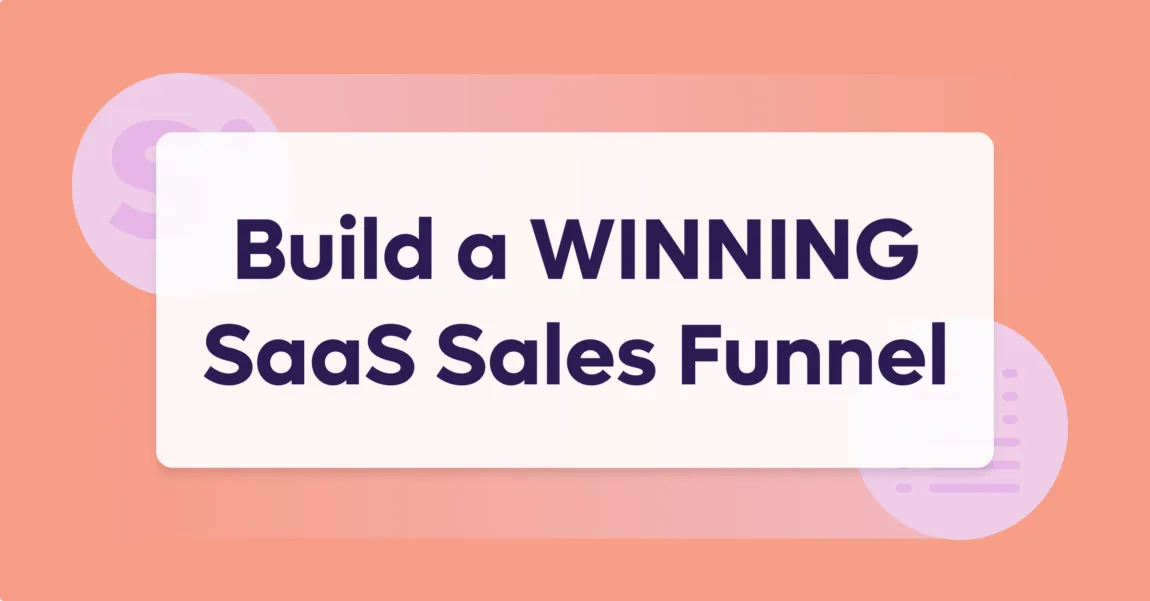

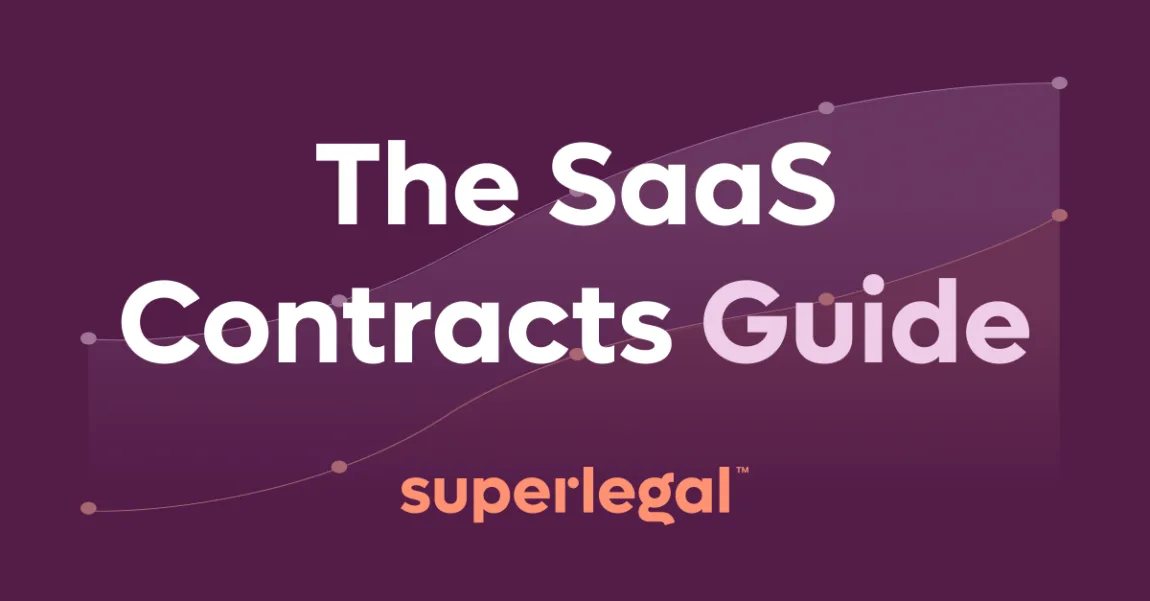
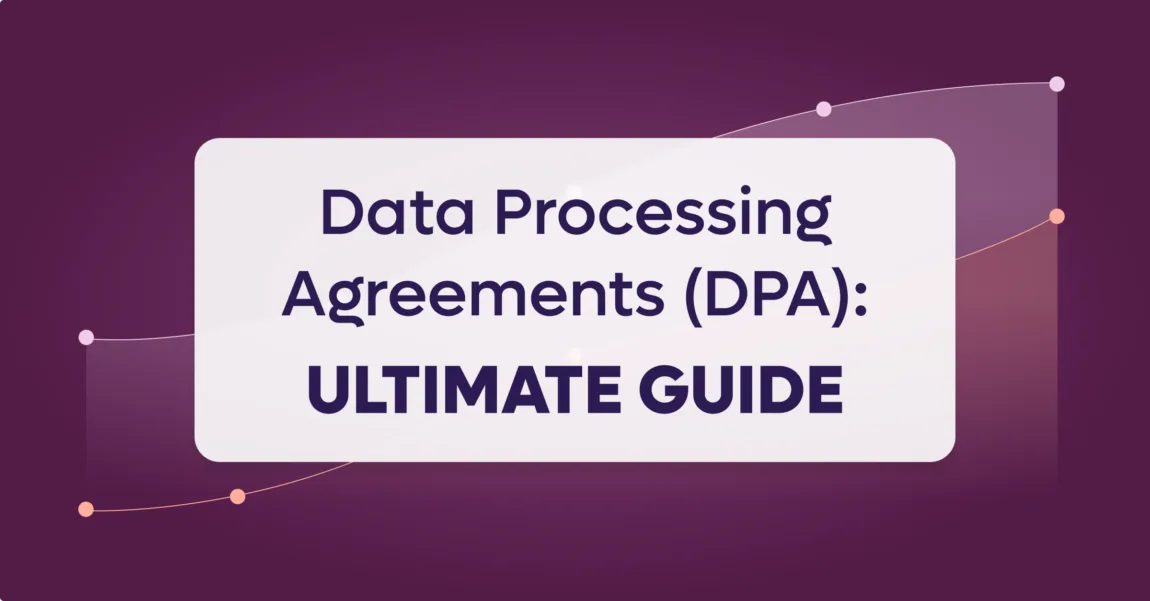
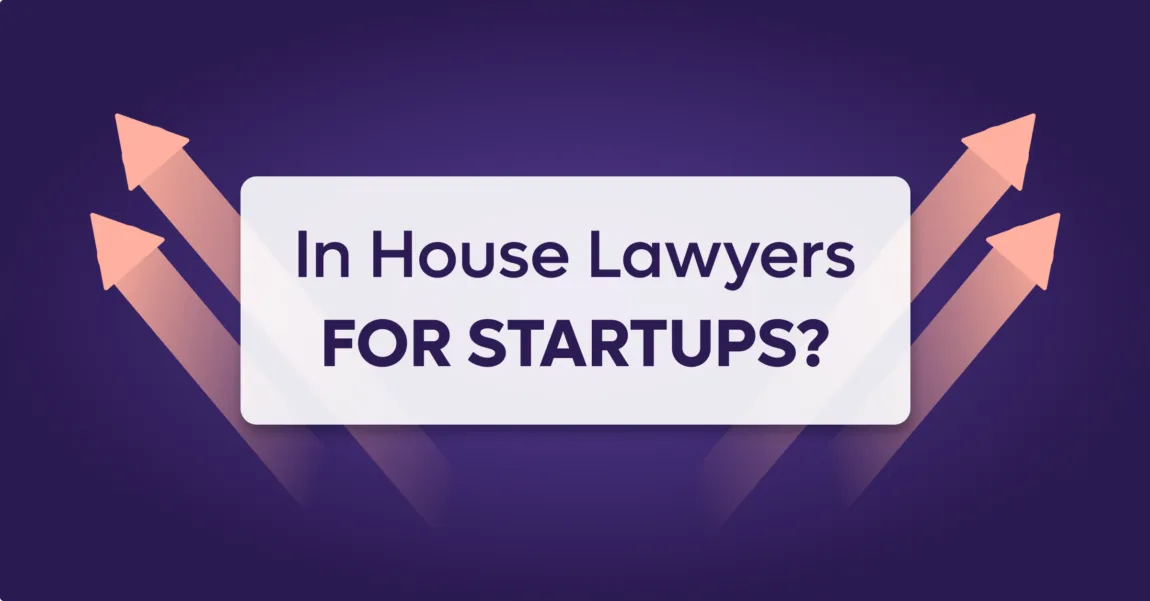
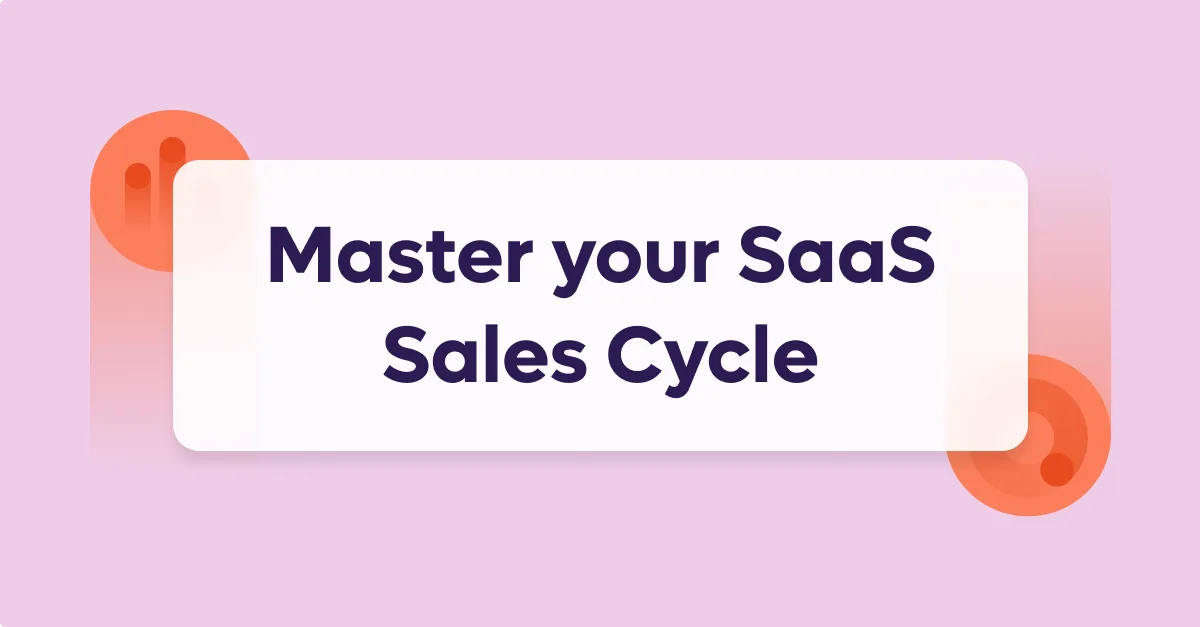

By entering your email, you agree to our Terms & Conditions and Privacy Policy.